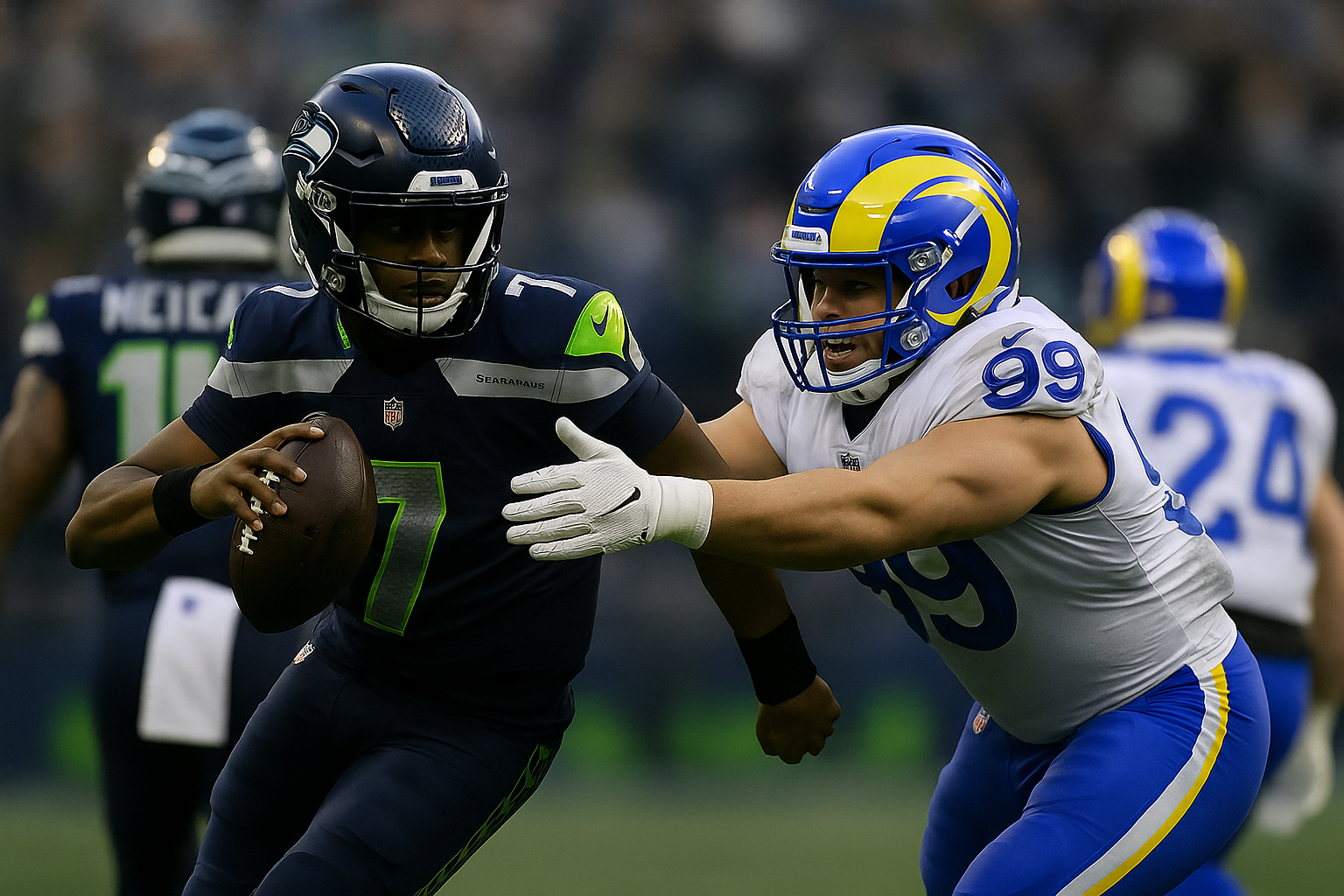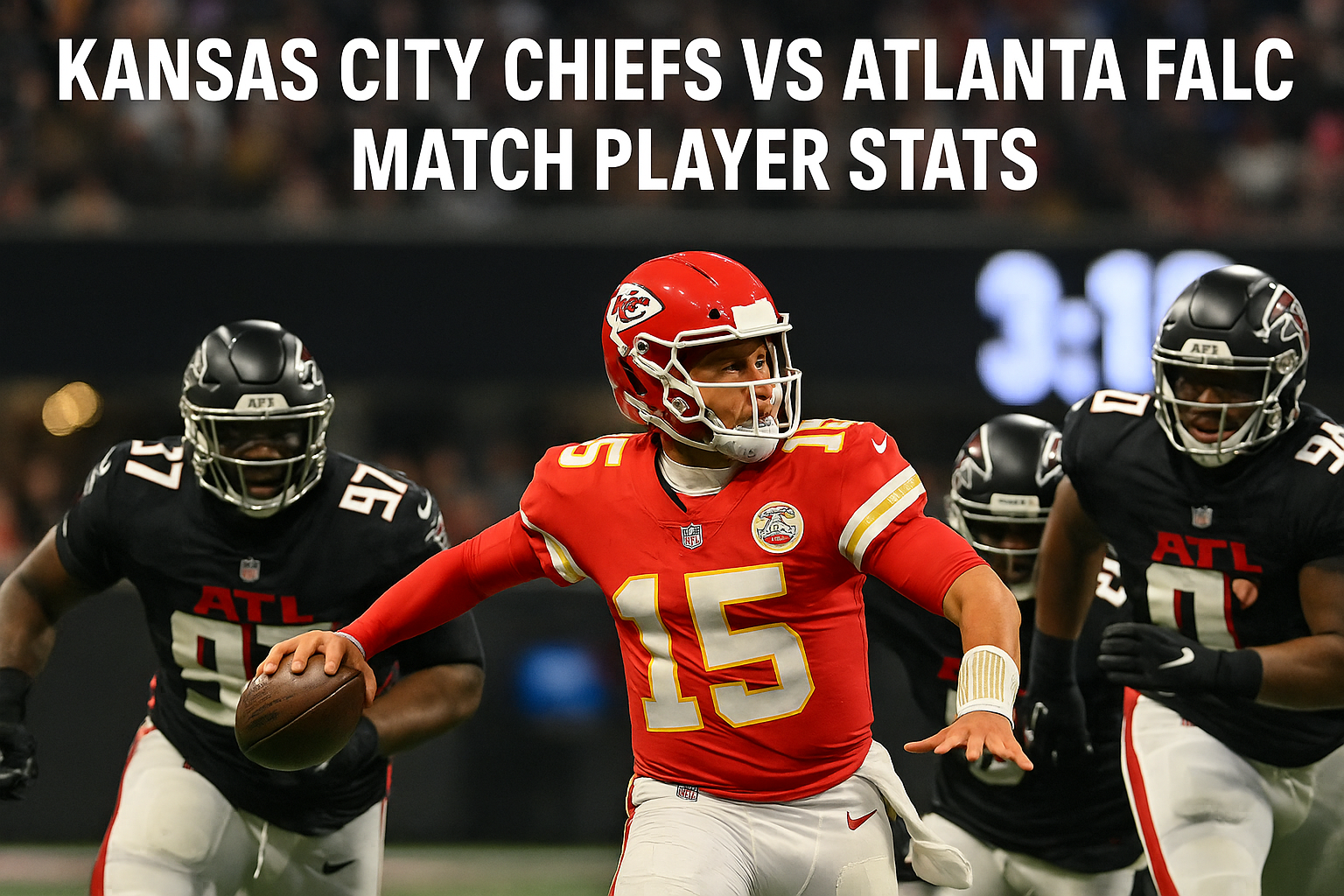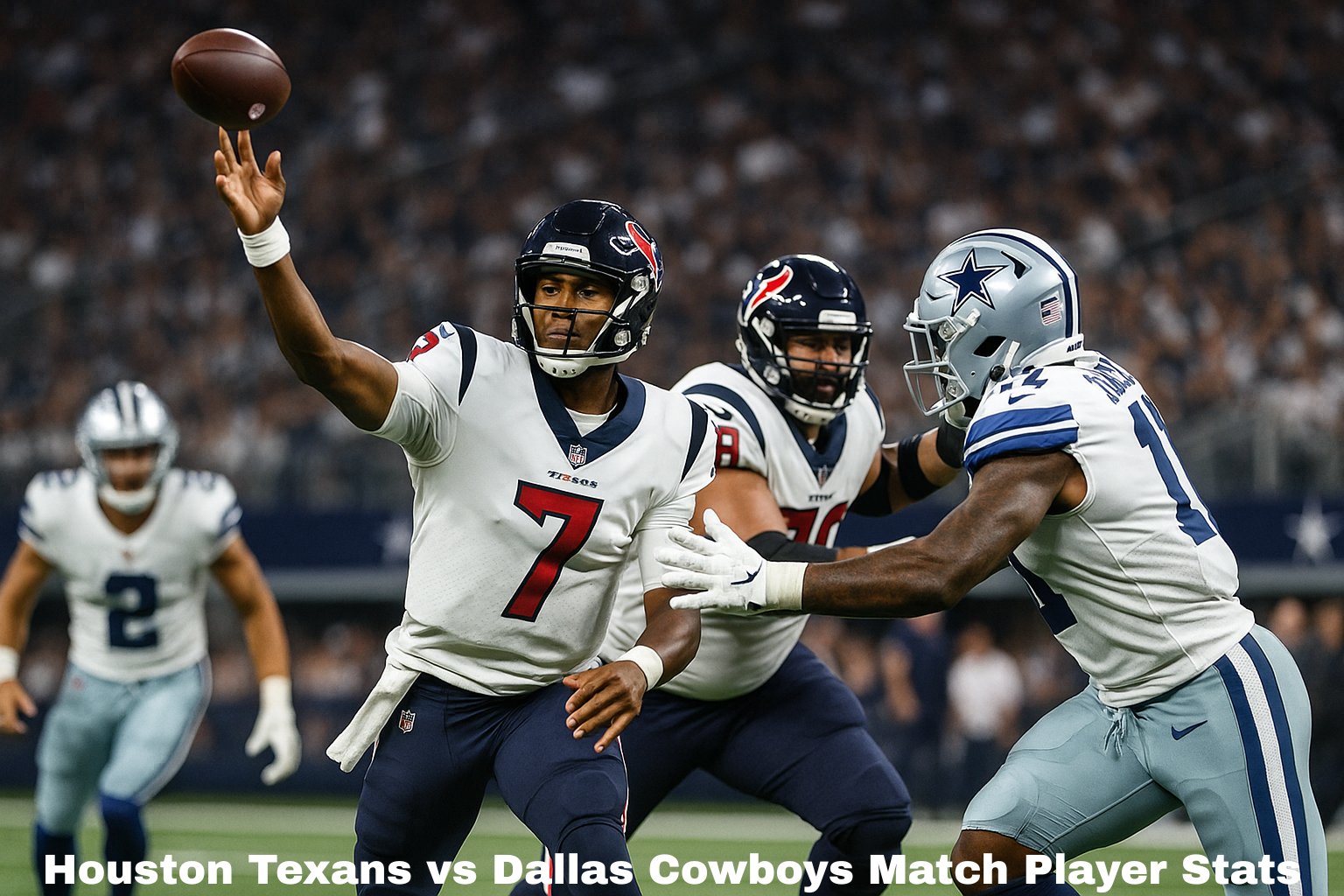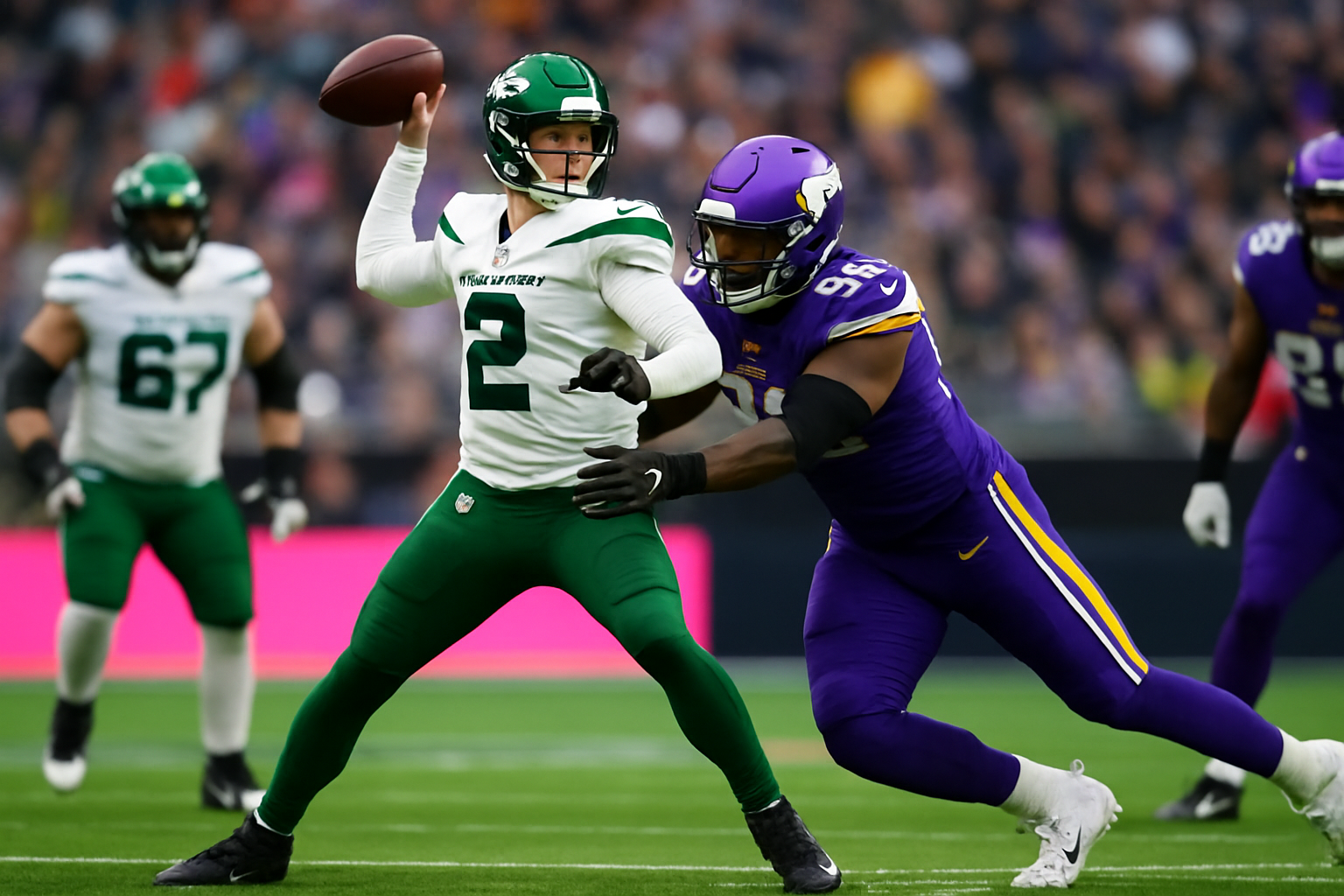Introduction
The Seattle Seahawks and the Los Angeles Rams faced off in a tightly contested Week 18 matchup that held playoff implications for the Seahawks and evaluation opportunities for the Rams’ depth chart. This game, played at Lumen Field, offered a final chance for both franchises to close out the regular season with momentum. For Seattle, the stakes were clear: a win kept their playoff hopes alive. For Los Angeles, who had already secured a postseason berth, it was an opportunity to rest starters and test their second-string talent under pressure.
Game Replay
The Seahawks emerged victorious with a narrow 21–20 win over the Rams. From the opening drive, it was clear both teams had different agendas. Seattle played with urgency, while Los Angeles managed the game conservatively, relying on backups across both offense and defense. The Rams’ strategy nearly paid off, but missed opportunities in the second half tilted the result in Seattle’s favor. Geno Smith led a controlled offensive approach, while the Seahawks’ defense managed key stops late in the game. For the Rams, quarterback Carson Wentz stepped in for Matthew Stafford and delivered a statistically strong performance, making the contest far more competitive than expected.
The Significance of This NFL Week 18 Clash
This Week 18 fixture was pivotal for Seattle. With multiple NFC teams competing for limited wild card slots, a win was necessary to stay in contention. The Rams, having already clinched a postseason spot, chose to prioritize health and experience for reserves, leading to the inclusion of several lesser-used players.
For Seattle, the win alone didn’t guarantee playoff qualification due to tiebreaker scenarios. Nevertheless, they showed composure under pressure. For the Rams, the performance of backups like Wentz and running back Royce Freeman offered valuable insights ahead of their playoff campaign.
Seahawks Offensive Performance: Effectiveness Over Quantity
Geno Smith led the Seahawks’ offense, finishing the game with 189 passing yards, 1 touchdown, and no interceptions on 21-of-29 attempts. Though the stat line wasn’t explosive, Smith’s accuracy and composure in key moments—particularly on third downs—were crucial.
Kenneth Walker III, the lead running back, contributed 86 yards on 17 carries, consistently moving the chains and absorbing time off the clock. He added 18 receiving yards on 2 catches to complement his ground performance. Walker’s ability to push through the Rams’ defensive line helped Seattle maintain field position throughout the second half.
DK Metcalf had 4 receptions for 54 yards, while Tyler Lockett contributed 5 catches for 62 yards. The passing game emphasized short and intermediate routes to minimize risks. The lone touchdown came via tight end Noah Fant, who finished with 3 receptions for 28 yards.
Seattle’s offense wasn’t explosive, but it was efficient when it mattered—particularly in the red zone and on third-down conversions, where they went 7-for-13.
Rams Second-string Squad: Remarkable Stats Despite Loss
Despite the loss, the Rams’ second unit, led by Carson Wentz, delivered a commendable performance. Wentz completed 17 of 27 passes for 237 yards and 2 touchdowns, throwing 1 interception late in the fourth quarter during a desperate drive. Royce Freeman emerged as the top rusher with 67 yards on 15 carries. His physical style kept the Seahawks defense engaged and opened play-action possibilities. Rookie running back Zach Evans also saw limited snaps and added 29 yards on 6 carries.
In the receiving game, Demarcus Robinson stood out with 5 receptions for 93 yards and 1 touchdown, including a 35-yard score in the second quarter. Tutu Atwell and Tyler Johnson combined for 7 catches and added depth to Wentz’s target options. The Rams’ offensive line, consisting mainly of backups, managed decent pass protection, surrendering only 2 sacks. It allowed Wentz the time needed to execute despite a limited playbook.
Defensive Efforts That Influenced the Result
The Seahawks defense produced timely plays in crucial moments. Bobby Wagner, facing his former team, led Seattle with 10 total tackles and added 1 sack. His leadership and positioning were key, especially in third-down situations. Devon Witherspoon, the standout rookie cornerback, recorded 5 solo tackles and broke up 2 passes. His aggressive coverage on the Rams’ top receivers limited explosive plays.
Defensive tackle Jarran Reed notched 1.5 sacks and helped bottle up interior runs. On the edge, Boye Mafe added consistent pressure and recorded 4 QB hurries. The Rams’ defense, although missing key starters like Aaron Donald, performed respectably. Michael Hoecht led the team with 1.5 sacks and pressured Smith multiple times. Linebacker Christian Rozeboom had 9 tackles and kept Walker from breaking free on multiple occasions.
Special Teams Showdown: Impressive Performance by Rookie Kicker
Seattle’s rookie kicker Jason Myers had a perfect outing, converting all 3 extra points and two field goals from 43 and 49 yards. His field goal late in the fourth quarter proved to be the difference in the final scoreline. On the Rams side, Brett Maher converted both extra points and a 42-yard field goal but missed a crucial 45-yard attempt in the fourth quarter that would have given the Rams the lead. The miss shifted momentum back to Seattle.
Seattle’s punter Michael Dickson averaged 48.2 yards per punt, pinning the Rams inside their own 20 on three occasions, adding field-position advantage for the defense.
The Tactical Influence of Fresh Starters
The Rams’ decision to rest starters reshaped the game tactically. With a simplified playbook, the offensive strategy leaned on straightforward zone runs and quick reads for Wentz. On defense, coverages were kept basic to reduce errors from young players like Tre Tomlinson and Quentin Lake. Seattle, by contrast, played their starting unit throughout. The team opted for a balanced approach, mixing run and pass while managing clock effectively. Offensive coordinator Shane Waldron emphasized ball security and rhythm, which paid off as Seattle committed zero turnovers.
Los Angeles’ defensive coordinator Raheem Morris used the opportunity to test various alignments, including three-safety looks and increased blitzing from the nickel corner. It added variety but also introduced risk, which Seattle exploited in key moments.
Four Crucial Statistical Metrics That Influenced the Result
- Third-Down Efficiency
- Seahawks: 7-of-13
- Rams: 4-of-11
Seattle’s ability to extend drives helped dominate possession time and limit Rams’ offensive opportunities.
- Red Zone Conversion
- Seahawks: 2-of-3
- Rams: 1-of-3
Capitalizing in the red zone proved vital. Seattle turned more opportunities into points.
- Time of Possession
- Seahawks: 33:12
- Rams: 26:48
A near 7-minute advantage gave Seattle more control over the pace of the game.
- Turnover Margin
- Seahawks: 0
- Rams: 1 (INT by Wentz)
In a close game, avoiding turnovers made the difference for Seattle.
Future Prospects
Seattle Seahawks:
The win allowed Seattle to finish the regular season on a high note, ending with a 9–8 record. However, due to other NFC results, their playoff entry remained dependent on external outcomes. Regardless, the performance suggested a strong foundation for the 2025 season, especially with a maturing defense and steady quarterback play from Geno Smith.
Los Angeles Rams:
The Rams’ second-string players showed depth and readiness. Carson Wentz’s sharp performance provides a valuable backup option behind Matthew Stafford heading into the postseason. Defensively, young players gained experience that could be critical in deeper playoff rounds.
For head coach Sean McVay, this game served its purpose: maintaining competitiveness while preserving the health of key starters.
Final Thoughts
The Week 18 showdown between the Seattle Seahawks and Los Angeles Rams was more than just a formality. For Seattle, it represented the culmination of a season’s effort to reach the postseason. For the Rams, it was a developmental stage for the next man up. Player statistics revealed much about coaching decisions, execution under pressure, and roster depth.
Seattle’s efficient offense, combined with solid special teams play and disciplined defense, helped edge out a close contest. The Rams’ backups performed admirably, nearly pulling off an upset against a team with everything to play for. Both teams walk away with key takeaways: Seattle with renewed momentum, and Los Angeles with proof of roster resilience heading into the playoffs.
FAQS
1. Who was the top performer for the Seahawks in Week 18?
Geno Smith led with 189 passing yards, 1 touchdown, and managed the game efficiently without turnovers.
2. How did Carson Wentz perform for the Rams?
Wentz completed 17 of 27 passes for 237 yards and 2 touchdowns, showing strong command despite the loss.
3. What was the impact of Seattle’s defense in the game?
Bobby Wagner led the defense with 10 tackles and 1 sack, helping Seattle contain key plays in the second half.
4. Which kicker made a difference in the final score?
Jason Myers hit two key field goals, including one in the fourth quarter that sealed Seattle’s one-point victory.
5. What were the most critical game stats?
Key stats included Seattle’s 7-of-13 third-down conversions, zero turnovers, and a 33-minute time of possession advantage.




